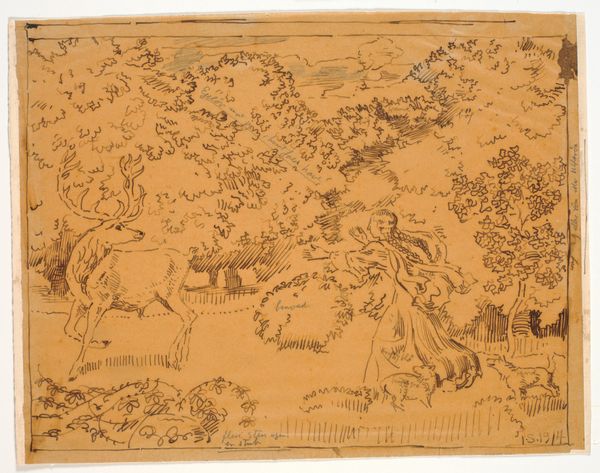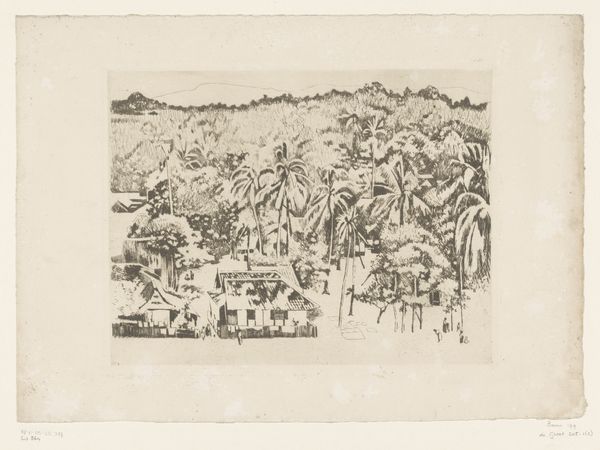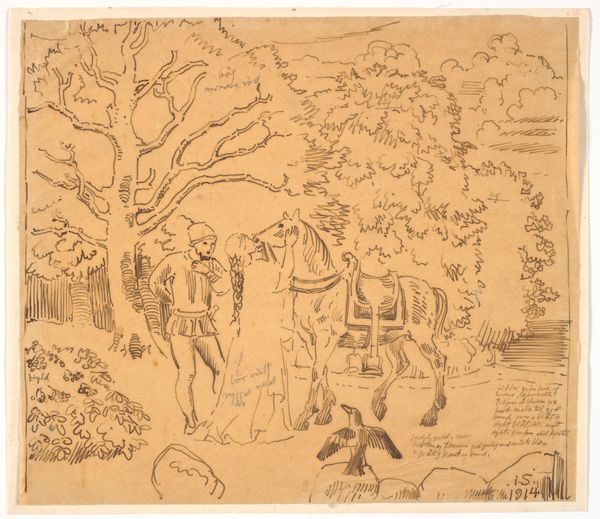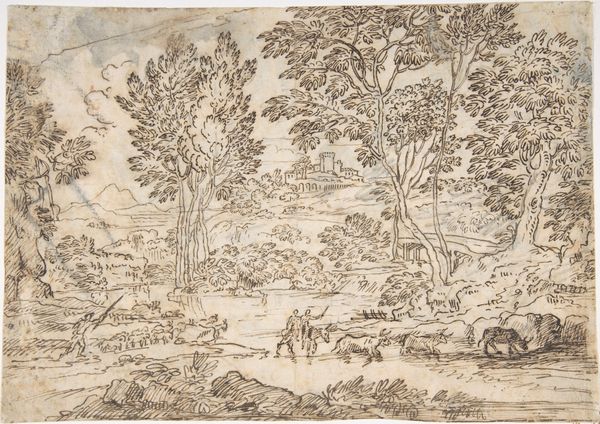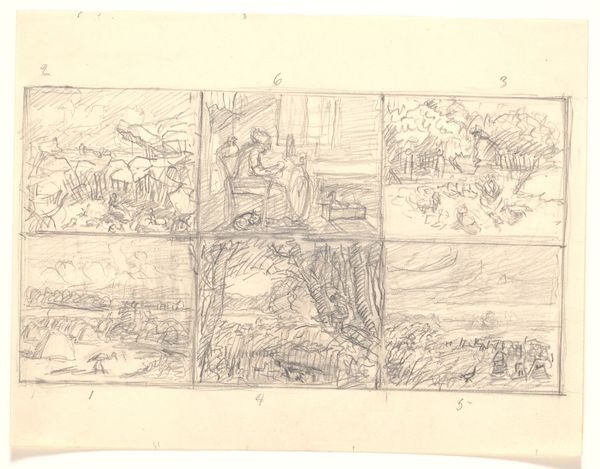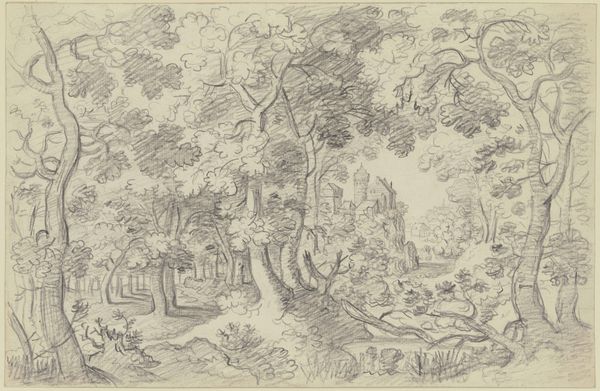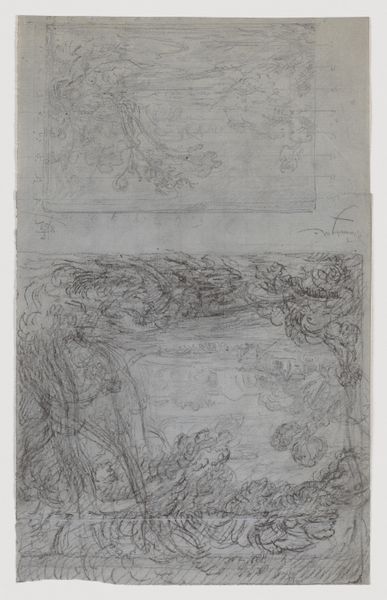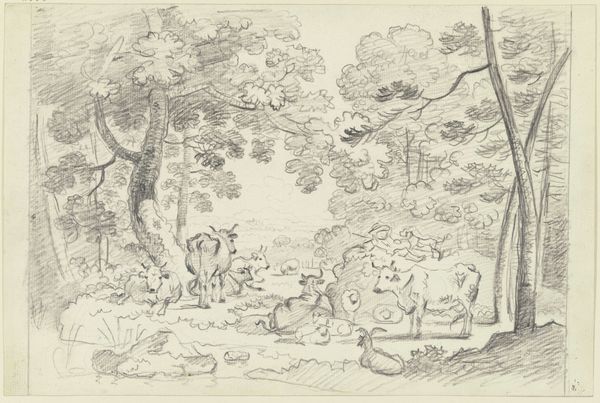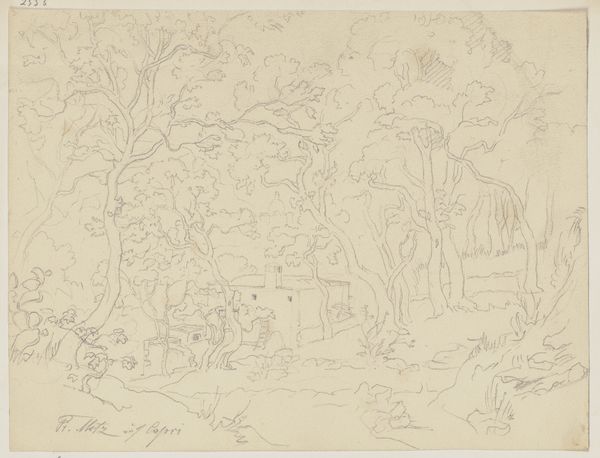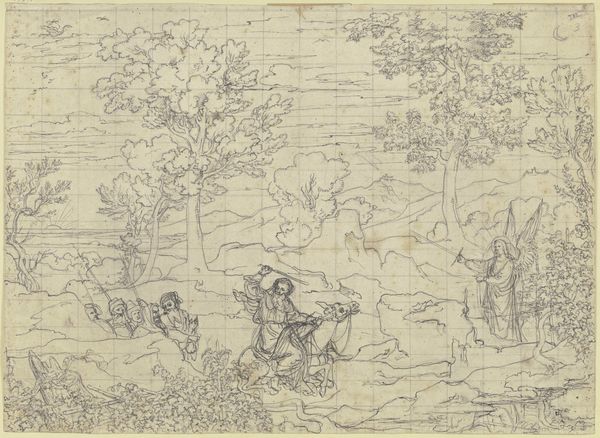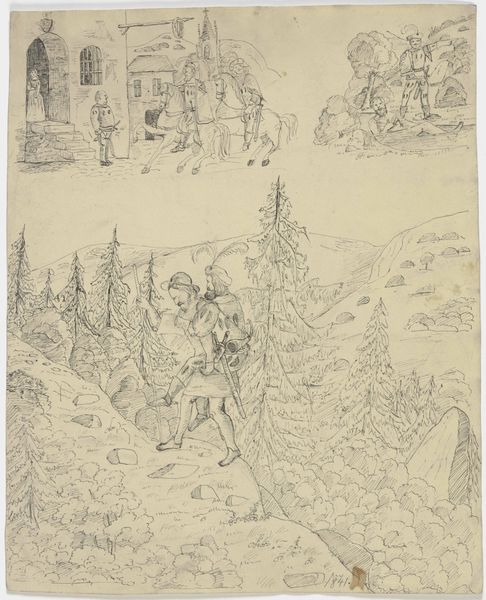
drawing, paper, ink
#
drawing
#
narrative-art
#
landscape
#
paper
#
ink
#
symbolism
Dimensions: 250 mm (height) x 285 mm (width) (bladmaal)
Curator: Here we have Joakim Skovgaard’s 1914 ink and chalk drawing on paper titled, “Kalke med folkevisemotiv (Jomfruen i ormeham),” which translates to "Lime with Folk Song Motif (The Virgin in the Snake Pit)." It's a scene that certainly pulls the viewer in. Editor: My first impression is one of subtle drama. The composition, rendered so delicately with these dry materials, possesses an air of quiet tension. Curator: Precisely. Skovgaard uses line weight and hatching to create depth. Note how the horizon line, the subtle treatment of light...it creates spatial ambiguity, furthering the enigmatic quality. The texture of the paper itself is crucial to the mood. Editor: Absolutely. I'm particularly struck by the way the landscape isn't just background, but almost a character. I imagine lime being relatively available and used throughout Danish history as a primary and cheap drawing material; what do you imagine were some practical aspects influencing the drawing in chalk and ink rather than some other media? Curator: Skovgaard here, like much of the Symbolist movement, wasn’t after mimetic representation, but a deeper psychological resonance. We observe that in the thematic symbolism of innocence threatened, of a kind of primal confrontation. Editor: That checks. Looking at it formally, one could easily miss its relationship to popular cultural imagination rooted in Danish society at the time of making. We cannot ignore, when dealing with artwork from that time, its material constraints. What can we speculate about the labour involved, given Skovgaard's biography? Curator: Interesting. While we can't know his every thought, Skovgaard was deeply religious, involved with church commissions and artistic endeavors rooted in national romanticism. One is invited to consider these ideological structures to inform one’s reading. Editor: True. So, while it is "about" something according to a conventional understanding of the theme, the artistic experience involves both subject matter and objectness... and process and historical influences, no? It shows an art based as much on materiality and cultural work. Curator: I agree entirely. Editor: So that tension we feel comes not just from what it represents, but how that representation comes into being materially and historically. A fine, albeit modest example!
Comments
No comments
Be the first to comment and join the conversation on the ultimate creative platform.
